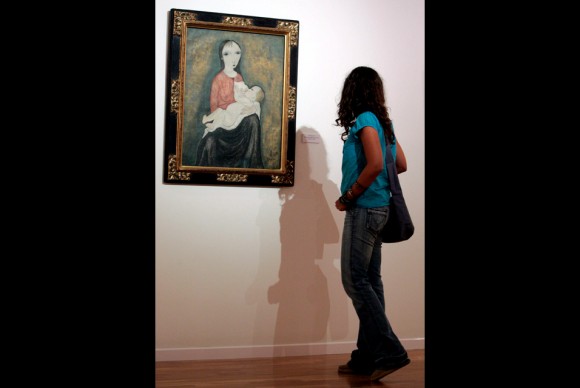Nearly 40 works by Japanese artist Leonard Tsuguharu Foujita found by museum
TOKYO (REUTERS).- Nearly 40 previously unknown works by Japanese artist Leonard Foujita, who made a name for himself in pre-World War Two Paris and was an acquaintance of Picasso and Matisse, have been discovered by a Japanese museum.
Combining Japanese ink techniques with Western-style painting, Foujita — a noted cat lover — became especially known for his paintings of naked women and cats.
The Pola Museum of Art in Hakone, a mountain resort town just west of Tokyo, said the 37 pieces were part of a gift from a private collector within Japan but declined to name their nationality.
“These were completely unknown before, so we were quite surprised by the gift,” said Yurika Hirata, a museum spokeswoman.
“It was previously thought that Paris was the main site of Foujita’s work in his later years, but notes on the back mention that some were painted in other countries. It tells us new things about what he did.”
The pieces are oil paintings on thick paper mounted on fibreboard and painted between 1956 to 1958.
Some appear to have religious themes, while others show children doing various kinds of work such as house cleaning or frying eggs and may be related to Foujita’s “Little Artisans” series of paintings.
Foujita, born Tsuguharu Fujita in 1886, graduated from what is now the Tokyo National University of Fine Arts and Music at the age of 24 and moved to Paris three years later.
Taking a studio in Montparnasse, he met artists such as Modigliani and is said to have studied dance with Isadora Duncan. His paintings, which initially sold well, drew comment for the milk white color of the skin of the women he portrayed.
After a stint working and traveling in South America, Foujita returned to Japan in the 1930s, where he produced propaganda art for the military. He eventually returned to France, where he converted to Catholicism and died in 1968.
The new pieces will go on display from Sept 6.
Related posts:
- Japanese Woodblock Prints to Fill the Galleries…Twice at Tacoma Art Museum
- Milwaukee Art Museum Receives $7.6 Million Bequest from the Estate of Leonard and Bebe Levine
- Japanese Art Dealers Association Announces Asia Week Exhibitions
- Indianapolis Museum of Art to Introduce Work of Contemporary Japanese Painter Tawara Yusaku
- Michelle Obama Presents Highest Honors for Museums to Japanese American National Museum

